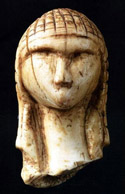Anthropology, Department of

Department of Anthropology: Faculty Publications
ORCID IDs
Zeljko Rezek http://orcid.org/0000-0001-9987-7985
Document Type
Article
Date of this Version
2-7-2020
Citation
Journal of Archaeological Method and Theory (2020) 27:887–928
https://doi.org/10.1007/s10816-020-09445-y
Abstract
The stone artifact record has been one of the major grounds for investigating our evolution. With the predominant focus on their morphological attributes and technological aspects of manufacture, stone artifacts and their assemblages have been analyzed as explicit measures of past behaviors, adaptations, and population histories. This analytical focus on technological andmorphological appearance is one of the characteristics of the conventional approach for constructing inferences from this record. An equally persistent routine involves ascribing the emerged patterns and variability within the archaeological deposits directly to long-term central tendencies in human actions and cultural transmission. Here we re-evaluate this conventional approach. By invoking some of the known concerns and concepts about the formation of archaeological record, we introduce notions of aggregates and formational emergence to expand on the understanding of how artifacts accumulate, what these accumulations represent, and how the patterns and variability among them emerge. To infer behavior that could inform on past lifeways, we further promote a shift in the focus of analysis from the technological and morphological appearance of artifacts and assemblages to the practice of stone use. We argue for a more rigorous and multi-level inferential procedure in modeling behavioral adaptation and evolution.


Comments
(c) The Authors 2020, This article is licensed under a Creative Commons Attribution 4.0 International License